2013.10.06 11:35
6 October
Read earlier: "...locale and history have simultaneous real and fabled coordinates, anchored both in actuality and in the archetypes of innocence and experience, paradise gained and lost... ...the reader enters a fictive world with its own unique operating principles, in which past and future conjoin to form a continual present in which the extraordinary meet the commonplace to defamiliarize and release an aura of strangeness and wonder... ...traditional oppositions--realism and fantasy, fact and illusion, history and myth, reason and irrationality--coming together in a complex of significance."
2013.11.04 19:29
Why won't you design what we (the public) want?
Was just inspired to write a 'historical' novel where Schinkel uses the 'influence' of the Crown Prince to get to do the designs he, Schinkel, wants. The Crown Prince figures out Schinkel's stratagem and thus starts changing his mind like every week or so as to what style a project should be designed in, just to drive Schinkel a little crazy, but also to see just how clever Schinkel can be. Schinkel, in turn, figures out the Crown Prince's stratagem and hence the architecture just starts getting more and more weird. [Wolfhilde von Schlittenfahrt, the sexy, new intern in Schinkel's office quickly becomes aware of the dueling stratagems and immediately starts 'busting' in her own stratagems.] Add to that that both Schinkel and the Crown Prince are obsessed with the life and works of Heinrick von Kleist and participate in a secret Von Kleist Society where all forms of strangeness ensue. Working title: Kohlhaas wo bist du?
2013.12.06 10:22
How We Hate on Architecture Now
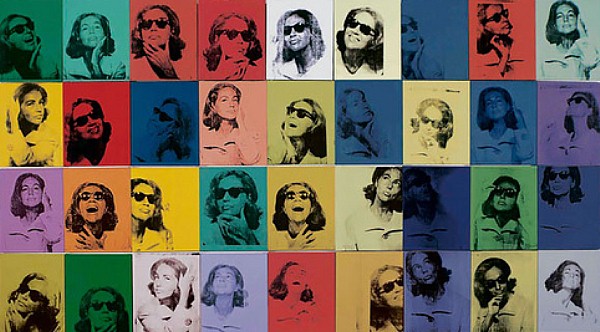
This is the concept sketch for the next stadium I design.
2014.01.01 13:03
SHENZHEN
Not sure why, but, while reading this post, I thought about the possibility of a virtual architectural biennale, some kind of online extravaganza. Webpages as venue for exhibits, lectures, discussions, touring. If I was the curator of the first such virtual architectural biennale the theme would be "How would you curate a virtual architectural biennale?"
Perhaps I should just start a forum thread "How would you curate a virtual architectural biennale?" every two years and see what happens.
1 January
2014.01.01 14:15
Tafuri's account of the operative tradition commenced with Giovanni Pietro Bellori's Le Vite de' pittori, scultori et architetti moderni (The Lives of the Modern Painters, Sculptors and Architects, 1672), in which he presents the "most important" artists of the time as a series of art-biographical accounts in the tradition of Vasari, introduced by a treatise on classical art. Tafuri describes the text as instrumental because Bellori's choice of the very best artists is limited by a set of values that he seeks to instill as lessons for artists and patrons of the present and future. Among Le Vite's twelve biographies are Annibali and Agostino Carracci, Caravaggio (but provisionally), Nicolas Poussin, Antoon van Dyck and Pieter Paul Rubens: the principal exponents of a "pure" classicism. The painters, sculptors and architects of the baroque fail to rate a mention, with Gianlorenzo Bernini, Borromini and Pietro da Cortona conspicuously absent. In promoting the classical tradition and setting aside the baroque as a forgettable interruption, Bellori's history sets up a dichotomy among his contemporaries, dividing them into heroes and reprobates. But more than this: in judging the present and recent part according to a preconceived idea of what the future should hold--the unconditional reinstatement of Renaissance classicism, in this case--Bellori, as Tafuri's archetypal operative historian, distorts his account of the past in order to shape the future, colouring the opinions of patrons spending money in the present. Bellori does not explicitly reject the baroque. He negates it, discounting its very existence. If his pretense of erasing from cultural memory that which actually happened--evidence, especially in Rome, being far from invisible--influences the future of art, then his historiography succeeds under the thesis against which Tafuri reads it. He 'does not take history for granted [nor] accept reality as it is,' writes Tafuri. The operative critic does not 'simply influence the course of history, but must also, and mainly, change it, because its approval or rejection have as much real value as the work of the artists.' Thus Tafuri distinguishes a more forgivable ignorance from operativity: an historian might write a biased account that reflects his or her social status, education, life experience, and so on; yet the instrumental historian's informed judgments precede the very selection of that which he or she represents as an account of the past, saying of that past which fails to conform to that figure's values: "it never happened. and nor should it ever". Historical authority therefore impinges upon the production of art at a grander instrumental level. While Tafuri cites Blear as an extreme case--and by doing so unambiguously casts Blear as a villain, a judgment that we also ought to regard as somewhat instrumental, not readily supported by later historiography--the endurance of baroque art indicates the relative power of the historian's authority. As a model, though, Bellori illustrates for Tafuri the complicity between historiographical distortions and the operative's capacity to imagine the future.
Andrew Leach, Manfredo Tafuri Choosing History (2007), pp. 122-23.
What are the "forgettable interruptions" of today's (operative) architectural 'history?' Who are the heroes and the reprobates of today's (operative) architectural 'history?'
What "preconceived idea of what the future should hold" does today's (operative) architectural 'history' espouse?
2014.01.01 14:15
t a m m u z
Touching on your last question...
There are two spear heading movements (others, I believe, are practices of architecture that do not pretend to leap forward, to push the bubble's envelope, so to speak). The opportunist ideology of spear heading a (fictional) interpretation of reality, the seemingly realist pragmatist, the realpolitik of the architectural world...exemplified by Rem Koolhaas summarily. It is thoroughly complicit with neoliberalism. This tendency takes its interpretation of reality as a model for the future. Its amoral, agnostic, iconoclastic, clever like cancer and its as insidious.
Another is that of the architecture-as-science or science-as-architecture exemplified by emergent and parametricist architects. These, I believe, are fundamentally religious in outlook. They are equal to the Futurists in that representations of their ideology are raised to the status of religious icons. The architecture is not merely a product of a process, it bears the insignia of the process as much as the process bears the insignia of the genre of resultant form. Unlike the first spear head, they seek to model future reality on the basis of a (realistic-scientific) interpretation of a fiction. They are classically ideological, moralistic and (culturally) religious.
Hey, how about the thought of Rem Koolhaas as a Henry Kissinger of the architectural world?
And ZHA in the vein of the more fundamentalist and ideologically motivated Huntington?
2014.01.01 18:59
I like your answers, but they imply operative architectural practices more than operative architectural history, or, perhaps more precisely, architectural practice as operative architectural history. That's interesting, in that the architect acts as both practitioner and operative historian. I'm not sure how Tafuri relates to that (because I have to read further to understand more fully the whole operative criticism idea anyway), but your answers sure seem to put a contemporary twist on the subject.
Architecture as détente, as in the easing of strained relationships? (Now there's an architectural concept to conjure with.)
Huntington? (A middle-aged man from Uzbekistan just cut my hair two days ago at the Huntingdon Valley Barber Shop, but I don't think that's related.)
2014.01.01 21:20
t a m m u z
Samuel Huntington (author of the Clash of Civilization). Just setting up an analogy with two differing breeds of conservatives.
Yes, I'm aware I don't fall into the core of your questions (i.e., historiography proper), that's why I said 'touching on'.
...you ask : What "preconceived idea of what the future should hold" does today's (operative) architectural 'history' espouse"?
I also take the theorists into account, Koolhaas and Schumacher (or Weinstock for Emergence). Both have something to say about how they perceive architecture within its own nature and within its response to history. They don't practice on behalf of a contextual architecture really; they practice within their view of architecture within its place in history. In that way, they are making clear choices and selections (per the Leach text you present above) on what is, properly and relevantly, architecture. In a way, they would be selective historians situating their sensibilities within threads of their sensibilities' evolution.
2014.01.01 22:06
What I'm still not sure of is whether the two 'practices' you (critically) describe are the same as the type of practice/project that Tafuri feels architects should be involved in. It sounds like they are. In any case, your answers offer perfect examples to use in figuring out this whole operative/non-operative criticism/project issue. Plus, your answers provide a very good examples of non-operative criticism.
Thus another question: Will the future held forth by today's (operative) architectural 'history' indeed be the future?
2014.01.02 00:04
jla-x
tammuz, I think you accurately describe those 2 movements, but don't you think that the sustainability/localization/critical regionalism movement should be considered a third.
2014.01.02 02:36
t a m m u z
jla-x, of course my enlisting is neither fully studied nor final. The roots are reflections on recent concerns that incur an underlying feeling from my end in response to Quondam's provocation.
Elicited from the provocation, I read a sense of future -or, more precisely, the present with the sense of the future- itself as paradigm, the propelling of architecture into the future, the domain of architecture as a field of experimenting upon reality to furnish a new or newly interpreted reality....and, I sense, a resuscitation of architecture as a living changing corpus - the pangs of birth that ultimately invite the finality of death...it is not a coincidence that paradigmatic modernism happens on the world war graveyard of the 20th century. The feeling that you must choose to live in the shadow lands of uncritical banality -lived, accepted and unreflected upon; at most, lingering with a poetic aftertaste- for ever or be born to a short colourful life with a full stop at the end. The latter choice, in a godless secular world, is, I suggest, the source of paradigmatic change, of the anxiety to budge elsewhere, to propose new secular utopias (i.e., a beggars-can't-be-choosers utopia) or elevate preexisting conditions to the status of utopias (again, beggars...utopia).
Regionalism would not, in my understanding, fall into the domain of the second choice. Regionalism does not sense birth and death. It does not evoke the dissipation of humanity, our extinction. To be critical is in reality to be also critical in the sense of :the patient is in a critical condition. I read somewhere that Cormac McCarthy says that really good authors always have death as a concern. I sense that dragging us/architecture to a new rebirth is architecture's way of signaling/marking its place within history out of its anxiety in relation to moving to some kind of inevitable death. By contrast, the foundation of regionalism's pretense is eternity. Perhaps we should inaugurate the study of the existential history of architecture...
2014.01.02 17:26
I know where my uncertainty comes from. Tafuri's argument against operative criticism is against architectural historians that (operatively) used history (incorrectly according to Tafuri) to set a (correct according to the historians) agenda for architecture's future. Your two answers have architects utilizing current operative socio-political 'histories' (not operative architectural histories) to form their respective agendas for architecture's present/future. That's not to say your answers are thus incorrect, just that there is a slight disconnect between your answers and where my question(s) came from.
Tafuri ultimately becomes clear as to how architectural historians should utilize history (the past) in their criticism of architecture's present/future, but he does not come to the same clarity as to how architects should utilize history (the past) in their architectural projects.
Koolhaas's and Schmacher's texts do comprise fairly pervasive (architectural) historiographic currents, so their respective architectural projects are not completely rely on (outside) socio-political operative histories.
Regarding sustainability/localization/critical regionalism it seems that those "projects" would naturally benefit from a critical focus on architecture's history (the past).
2014.01.02 19:01
t a m m u z
Quondam, wouldn't you agree that Koolhaas does utilize historical architectural themes critically (for instance, tower/podium typology)? If so, would that not imply an operative utilization of architectural history as well as socio-cultural one in his espousal of a 'realpolitik' apropos neoliberalism? His research projects bridge, or at least attempt to do so, the architectural to the socio-economic/cultural. No? I understand Tafuri's cautioning and I understand that your concern lies within architectural history/historiography rather than practice...but as you point out, Koolhaas does take that task of a rationalizing history for himself to place himself within it (as an architectural and socio-economic/cultural practice) and eventually, he is, for many, a sieve (as he himself operatively constitutes a sieve) for certain historical readings, retroactive and acquiescent. I'm just wondering whether I truly understand the area of your uncertainty; would appreciate clarification otherwise. Is it in what you suggest is lacking in Tafuri and is furnished in the aforementioned architects' works: a prescriptive feedback into architectural practice? I'm not sure that is necessarily a lack . . . perhaps the world is too just wrong to put to right :-) and criticism is, on its own, valid and valuable?
Please correct me/forgive my assumption but I think you admire Gehry's work partially for the avoidance of positing altogether such questions and, therefore, for mustering up a (therefore needless) challenge? It would allow him to be, as you very pertinently describe it, pliable, non-resistant, open, non-rhetorical and free of history's burden (clearly in contrast to Eisenman)- not free of history, free of its burden. His does not invite the anxiety underlying the Eurocentric sensibilities of Koolhaas and Schumacher, who are not only architects but also intellectuals with an old world sensibility of history.
I was very happy to visit the OMA Seattle Library a couple of days ago. I really enjoyed it. Now I wonder whether we can't call it a piece of critical regionalism...
2014.01.02 20:04
t a m m u z, I agree that both "an operative utilization of architectural history as well as socio-cultural one" is present within the respective Koolhaas/OMA and Schumacher/ZHA 'projects'. Like I said in the beginning, I agree with your original answers, and I subsequently (oddly just I woke up this morning) came to realize how it was the "operative utilization of architectural history" that was missing. Anyway, between our last two posts the architectural and socio-cultural are now comfortably combined.
As a consequence of all of the above thread, I'm much more concerned/interested in how practice utilizes the architectural history/historiography. The type of architectural historian that Tafuri was against seems to no longer exist, and I'm not really sure who the correct (per Tafuri) architectural historians might even be today. The real 'operating' (historiography and practice) of today seems to be in the hands of architects themselves. (And whatever uncertainty I may still have is whether this assertion is true, and whether Tafuri ever anticipated such a development, but that's minor at this point).
Regarding Gehry, like you're now seeing the Seattle Library as critical regionalism (which sounds quite fine to me), I'm now interested in searching out "an operative utilization of architectural history" in his work. Gehry's early work does indeed comprise critical regionalism. And there's something about the initial designs (early 1990s) of the Disney Concert Hall's swooping forms/shapes first being conceived as stone that (I think perhaps) offers a key to the evolutionary unraveling of Gehry's operative utilization of architectural history. (These are very preliminary thoughts, and definitely nothing concrete).
Just to say it, I'm not here for a polemic; I'm enjoying the group think.
| |
2014.01.01 13:32
We need to talk about TED
Thirty odd years ago when I was one of the few architects in the world using CAD everyday at work, there was a lot of resistance to CAD in the architectural community at large. I wonder how prevalent parametricism will be 25-30 years from now? It wouldn't surprise me if parametricism and CAD come to share a similar history.
On a personal level, I still from time to time find myself (finally) acting on an idea I had 10 or 15 or even 20 years ago. The thing is though, the resultant executions of the years-old-ideas still manage to manifest a quality of innovation. Perhaps it can then be said that innovative ideas may take time to become a 'reality', but the innovation itself does not become old.
2014.01.01 20:26
SHENZHEN
...in thinking more about it, the idea of a virtual biennale kind of came to me because I realized that your last two posts about the Bi-City Biennale are being written (I assume) from Los Angeles. That got me thinking about how my virtual experience of the Bi-City Biennale through your posts is even more virtual than I first imagined. Eric (above) wrote your "essay has an overall Wish You Were Here feel," but you weren't even still there yourself. I don't know, it just seemed very inverted, paradoxical even.
Regarding a virtual biennale, I realize that it could never have the live event-ness of a real biennale, nor in any way be a 'machine' to bolster a local economy, but that lack of real place/time and economic drive might just be the underlying theme of any virtual biennale. Also, inversion. Instead of "Wish you were here," it would be more like: let me (virtually) show you what's special about where I'm at, but, to be honest, I'm glad you're not here because if too many people came here, then the special-ness would be lost.
2014.01.02 18:19
SHENZHEN
It's strange to realize that 1990 is now almost a quarter century ago, and how much the world has changed since then. It seems like one could say that the whole People's Republic of China has gentrified in that time. As have many other parts of the world. Are we living in an era of global gentrification?
Beginning to wonder what virtually bolstering architecture and urbanism biennale-ly might mean or what biennale-ly bolstering architecture and urbanism virtually might mean.
2014.01.07 12:36
Delightfully Absurd Architectural Drawings





| |
2014.01.24 12:12
24 January
2011.01.24 21:18
what is our current architectural style called
Architecture style is no longer defined by space, rather by time.
"Their house is the epitome of 2002 style."
"Design me something early 1840s. I'm feeling immediate-post-Schinkel lately."
"In the year 2525, when architecture is finally alive..."
It appears that the title should actually be An Architecture of Being Virtual because that title is exactly what [the] work represents. ...letters that are to be included in AAOBV, such as the skins analogy/question, delivery of content, facilitators, etc., virtual TV stations/channels. ...more collage than traditional exposition/display. ...one that comprises actual product placement while also "theorizing" about the new role of publicity in architecture. I know I'm 'playing' a bit here, but I also think I'm making a significant point about the 'hybrid' nature of cyberspace in general, and the ever morphing nature of the hybrid [architecture] specifically. ...we were part of a international conference on hybrid architectures. The conference is so hybrid that the participants don't even know (till now) that they composed a larger composite entity.
[2007] "In the future, your whole life will be a phone call." [Gosh, that now reminds me of Her.]
...and get that great new book on the workings of inspiration. I'm pretty sure it's called Even You Can Be a Copy Cat. Be careful of your use of the concept "create" in this context. Tools in and of themselves are incapable of creation; they facilitate dexterity and hence creation, however. Technologies and architecture are creations, and their own creative powers remain (forever) overshadowed by humanity's far superior creative powers. Your musings are thus incomplete without the inclusion of humanity's vast physical and imaginative capabilities. In terms of creativity, you must always remember the hand and the mind. JJM states: It seems more than obvious that the tools we use influence the way we think. SL replies: It may not seems so obvious, but it is probably more true that the way we think influences the way we use tools. ...wondered what the Latin word for idea was, and thus found notitia, notitiae. Interestingly, the first meaning of notitia is fame (as in notoriety) while idea, knowledge of, concept, notion are the second meanings.
[2005] I've been thinking about sculpture lately, at least virtually.

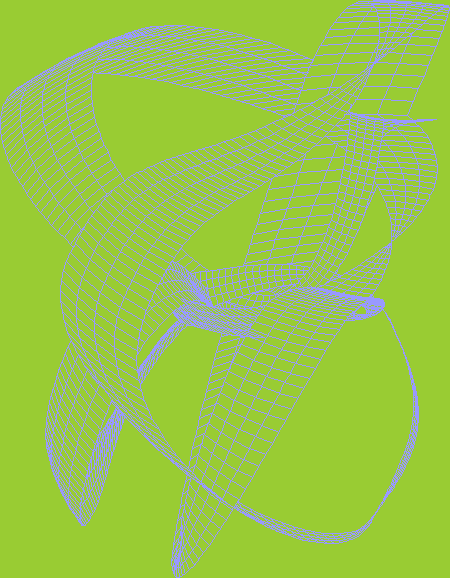
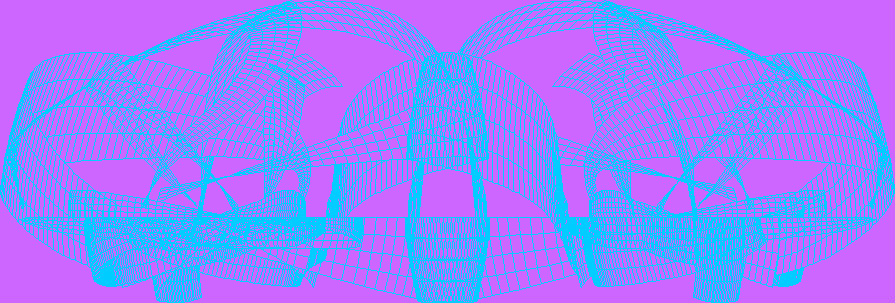

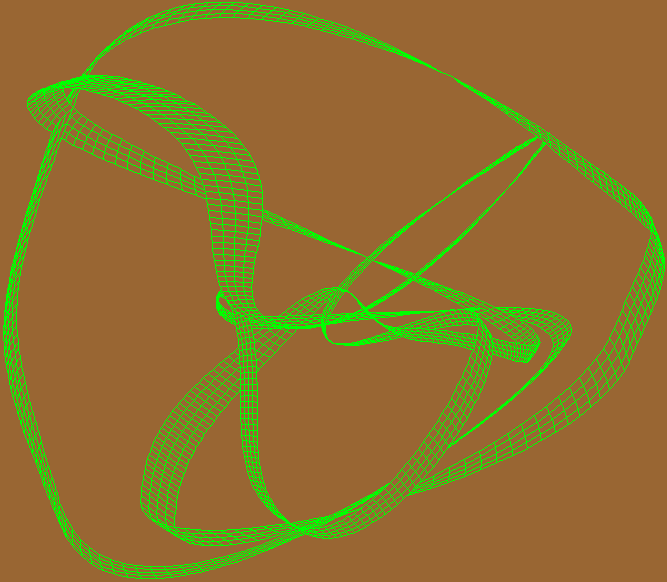
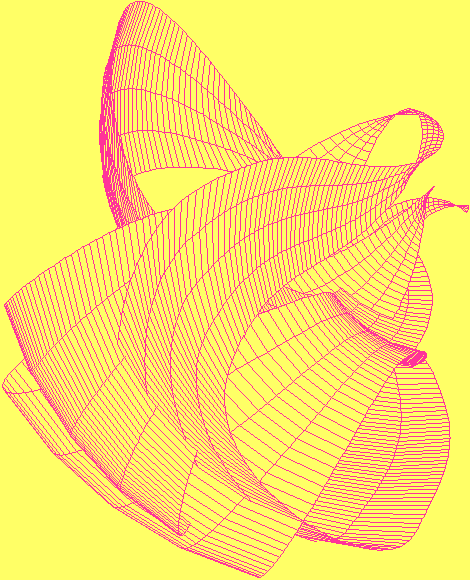
I'd now like a house in the all-of-the-above style.
|